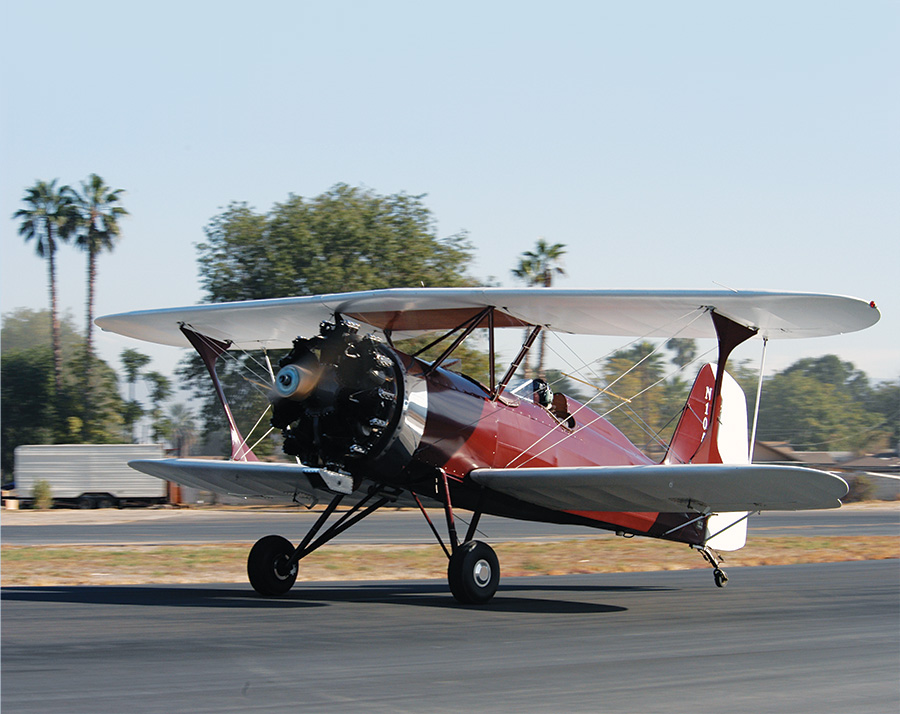
Tailwheel aircraft won’t keep going in a straight line while taxiing. Staying active on the rudders and watching for the slightest swerve is critical. (Photo: Tom Wilson)
“I want you to work on a taildragger checkout with me; can we get started this afternoon?” I get that a lot. Pilots see me taxiing out with my 1946 Champ or some other conventional-gear airplane, and they instantly succumb to the “that looks cool” urge. It’s then up to me to administer the reality check.
When they say “checkout,” what they really mean is a logbook endorsement attesting to their proficiency to fly a tailwheel aircraft (unless grandfathered-in by having logged time in such aircraft before April, 1991). There is no written test or minimum number of hours specified, but I always begin the conversation by preparing them for at least 10 hours of tailwheel dual. If you can acquire the necessary skill sooner, fine, but it’ll usually take all of that.
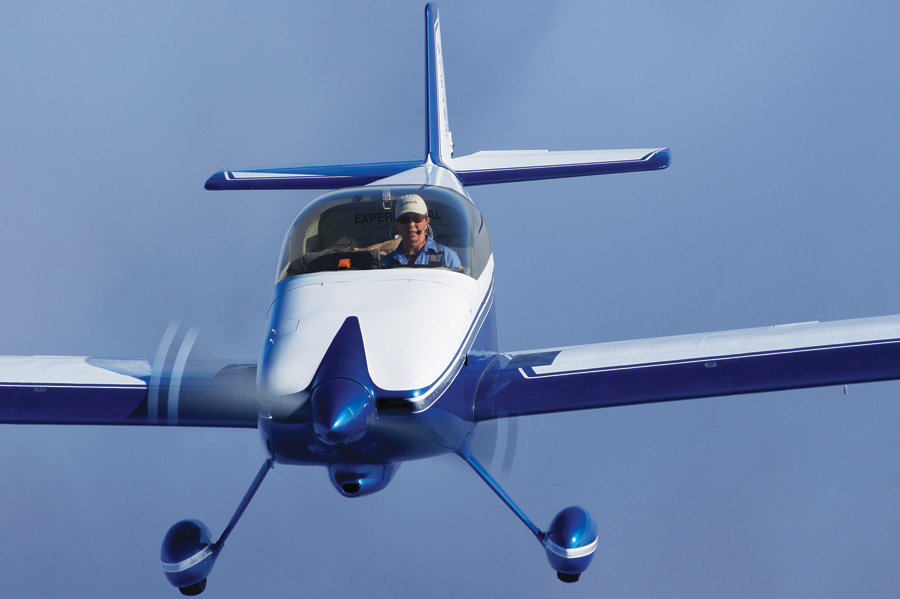
When she couldn’t find a good tricycle model in her price range, Louise Hose bought a conventional-gear RV-6 and earned her tailwheel endorsement during transition training. (Photo: Kai Hansen)
What’s so different? Pilots of tricycle-gear airplanes are accustomed to a friendly conveyance on the ground. You probably learned to taxi in about 10 minutes, during your first hour of instruction. You’ve found you can relax during taxi, most of the time. Tailwheel airplanes are, by comparison, always in a state of rebellion. Think of them, I tell students, like a mean horse; that nag is always looking back at his rider to see if he’s paying attention. He’ll curl his neck around and try to bite your foot unless you slap his nose with the end of the reins. After a while, he’ll settle down, but he never gives up trying. That’s how it is to fly taildraggers; be alert at all times you’re in motion and take immediate action to forestall diversions.
While we’re at it, let’s not overuse the term “taildragger.” I’ve operated taildraggers only a few times in my 55 years of flying, and that was after I broke a tailwheel spring and left the tailwheel behind on the runway, or when I was flying a replica early-day plane with only a tailskid. It’s a tailwheel airplane, not a taildragger. I will not belabor the once-common term for tailwheels, “conventional gear,” which would now more aptly describe tricycle gear.
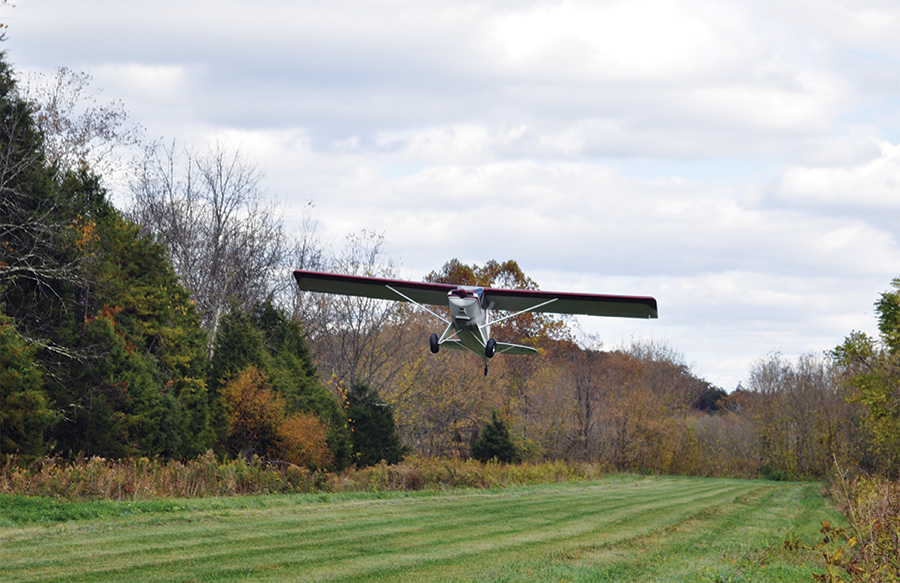
Turf is a wonderful surface for takeoff and landing practice—it’s much more forgiving of minor boo-boos than pavement. (Photo: Jared Yates)
The Basics
The intractability of tailwheel airplanes stems from the reaction to their center-of-gravity location while rolling on the ground. The maingear is ahead of the CG, and the tail, if in contact, is carried by a small, readily swiveling caster. Said tail would like nothing better than to bring the CG, which is somewhere around the pilot’s seat, around in front of the maingear. Think of a hand-truck carrying a refrigerator; push it, and it’ll constantly try to move out of the direction of your push. Pull it, and it’ll trail along obediently.
Dare I mention the effect of wind on your endeavors? In your tricycle flying, you’ve considered wind to be largely a non-factor, once you’ve landed and gotten the nosewheel planted. After a tailwheel aircraft touches down, the fun is just beginning. You have a decidedly smaller contact patch to steer with, a swiveling tailwheel, and a naturally unstable machine. Add some wind (it doesn’t take much), and your best efforts at control may not be enough. Respect the aircraft’s limitations and revise your wind-operating standards downward.
Brakes are decidedly more important appliances in a tailwheel airplane than in a tricycle. In training modern tricycle pilots, I demand that they stay off the brakes unless a lack of planning requires their use. But with a tailwheel, you’ll need to resort to differential braking quite often, at least until thoroughly proficient. In light winds, I can maneuver the Aeronca out to the end of the runway without touching its infamous heel brakes, but a beginner won’t be able to do that.
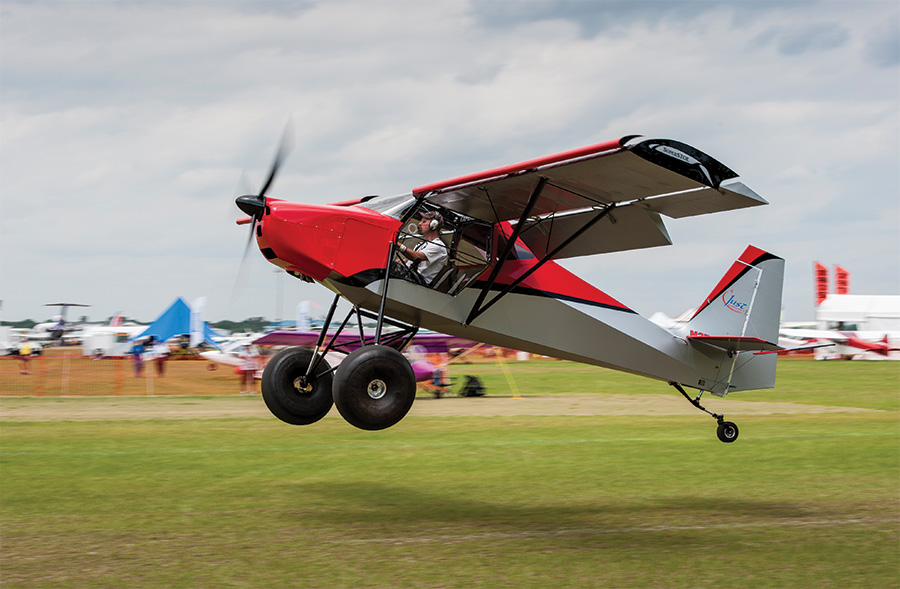
Typical landings in Just Aircraft’s SuperSTOL are three-point, at the slowest speed possible, with a very short rollout. (Photo: Richard VanderMeulen)
To Begin
We’ll start with simply taxiing the airplane up and down a long parallel taxiway or runway, learning to deal with its instability and limited steering response. Sometimes the transitioning pilot will have to handle several new concepts: obscured forward vision, stick controls, tandem seating, crew-assisted starting (propping) and, in older airplanes, heel-operated brakes. Restricted visibility over the nose is just something one learns to cope with, by careful clearing of blind spots, frequent S-turning, and employing a right-seat observer in side-by-side airplanes. Rather than boring, straight-line taxiing, it’s more productive training to do sinusoid wobbles from one side of the taxiway to the other, which will teach anticipation of rudder pedal reversing when changing direction and proper speed management. You will soon learn why old texts say to “taxi at a walk.”
Common Errors
Getting behind the airplane, requiring the instructor to intercept the wayward airplane before it runs off into the weeds, comes from not being aggressive enough with steering inputs, and that’s a result of expecting the tailwheel aircraft to keep going straight on its own, like a nosedragger would. Staying active on the rudders and watching for the slightest swerve cures this. It’s also important to keep the tailwheel firmly planted with up-elevator to maximize its effectiveness, given its small size.
The most important rule is to never let the tailwheel’s track get outside the span of the maingear. If it does, the steering is likely to unlock and the tailwheel will go into full-swivel mode; when it does, a stab of the outside brake is the only way to avoid a groundloop, the uncontrolled spinout that displays pilot ineptitude.
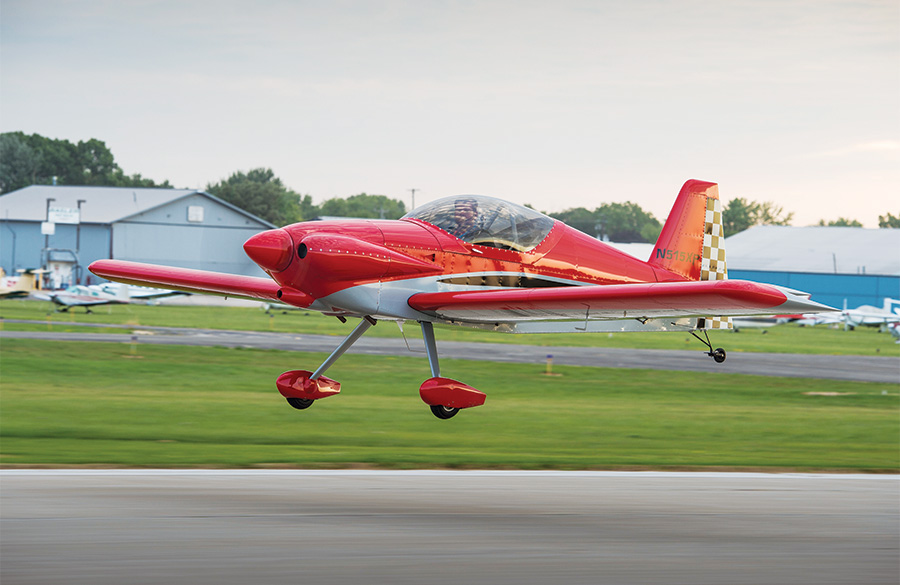
Once off the ground, tailwheel aircraft fly exactly the same as planes that have the steering wheel attached to the front. (Photo: Richard VanderMeulen)
Up To Speed
Once low-speed taxiing is mastered, it’s time to raise the bar. We’re now going to run up and down the runway, lifting the tail and setting it back down. It is important to have plenty of room, such as a 75-foot-wide runway with open margins, because of the risk of losing control. If there’s more than a breath of wind, do not attempt two-way runs. When forward motion matches a tailwind’s speed, rudder control disappears, and only judicious braking can save the day until the tailwheel is back on the ground.
As the CFI and designated lifeguard, I’ll be in charge of the throttle. Once lined up as if taking off, full power is applied and active steering is used to hold the centerline, “walking the rudders,” as the old-timers put it. If the student is not holding the stick back to keep weight on the tail tire, the nose will skate left immediately. As rudder effectiveness is gained, I’ll have him raise the tail to bring the runway into full view, with only rudder power to keep straight. I’ll reduce power to keep the airplane from lifting off, and we’ll fast-taxi along the runway tail-up, chopping throttle while there’s plenty of room left to stop.
This is the moment of truth, when the airplane is most vulnerable to swerving. Under deceleration, the instability of the aft-located CG is even more pronounced. The sudden loss of power alters the torque’s left-hand pull, and judicious steering will be needed as the tail is allowed to sink to the surface. Upon touchdown, the stick should be pulled back to assure maximum steering force.
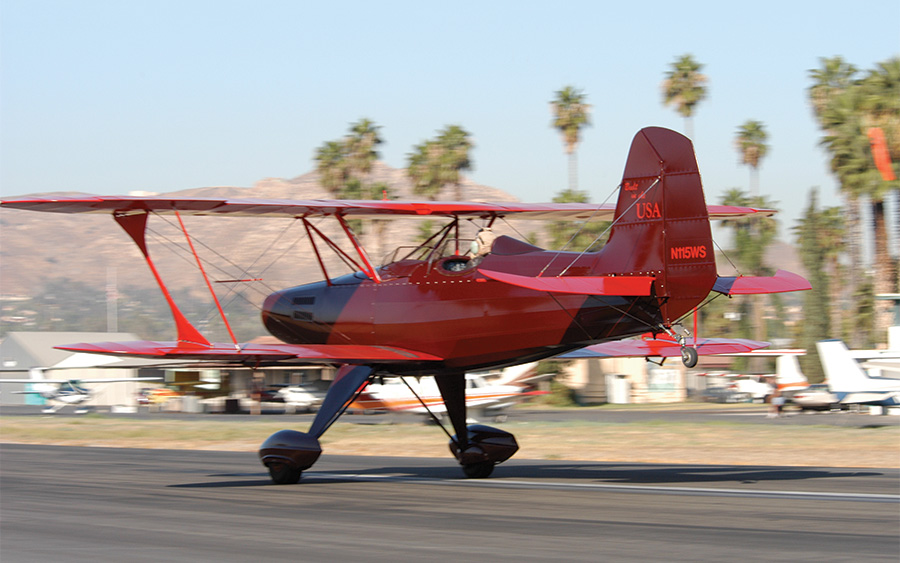
Wheel landings, with the tailwheel purposely kept off the ground while touching down, offer better visibility than 3-point landings. (Photo: Tom Wilson)
Common Errors
Most new tailwheel pilots will have to fight for control as rudder forces change when speed increases and decreases, and when the tailwheel lifts and falls. Overcontrol has to be tempered with steadily damping use of opposing control inputs, until the airplane stays in a straight line. Most often, the student will relax at this point, letting the stick go forward and unloading the tailwheel, and the plane will swerve out of control. “It’s not over yet!” is my constant mantra, transferred into the student’s vocabulary. You can relax, I insist, only when the tires are not turning.
Flying Solves Everything
Once the runway runs have exhibited a chance of success, it’s best to proceed to a full takeoff and the eventual landing. There’s less risk of control loss than in the previous tail-high launch-and-recovery exercises, with the shorter exposure. All that’s necessary to get airborne is to counter torque with right rudder, steer down the centerline, and adjust inputs as airspeed increases, transitioning from a rolling vehicle to a flying airplane. Now that we’re off the ground, we’re flying a normal aircraft, just as if the steering wheel was on the front.
As we approach to land, everything is the same—but it has to be stressed that touching down perfectly aligned with the runway is critical. Sideload on the landing gear invites a swerve because the aft-located CG is always ready to get around in front. No lateral movement can be tolerated, and the nose can’t be cocked sideways. One gets away with these little imperfections with self-centering tricycle gear, but any misalignment has to be dealt with instantly in a tailwheel machine.
Touchdown takes place, hopefully, with the tailwheel making contact at the same time as, or even slightly before, the maingear’s arrival. Should the tailwheel be off the surface as the maingear touches, the unsupported tail will come down, the angle of attack will increase, lift will be generated and you’ll have a bounce to deal with. If it’s only a small skip, keep the airplane straight and land it again. If it’s a “ker-sproing” crow-hop, pour on the power and go around. Get the tail down on the next try.
The good news is, the landing rollout rapidly decelerates into a more-survivable speed range. The bad news is, new tailwheel pilots tend to relax as this happens, just as if they had a nosewheel, and they’ll lose it by letting the stick float forward, allowing the tailwheel to get light.
My preference is to always begin takeoff and landing practice on a nice, wide grass runway. Turf is wonderfully friendly; it allows slipping without tripping, minor boo-boos stay minor, and if the touchdown is a little cockeyed, the grass will lubricate the tires while you correct it. That said, we’ll have to use pavement eventually, and it’s the ultimate test of tailwheel ability.
Common Errors
During takeoff, delaying liftoff by letting the tail get too high is a waste of energy. I tell the student to lift the tail as he feels the controls become effective, but to almost immediately start moving the stick back, keeping the tailwheel about a foot off the runway and allowing the airplane to fly as soon as it can.
Not employing aileron to help maintain a straight path is also common. Rudder is, of course, primary to tracking the centerline, but not equalizing the rolling friction of the maingear with correct aileron use makes the job harder.
Not fully stalling the airplane before touchdown just leaves excess energy to be dissipated during an unstable rollout. Even if it doesn’t bounce, the airplane is not in full contact with the surface and will require extra control measures. Do not allow the tail to swerve far enough to exceed the maingear span—ever! Keep saying, “It’s not over yet!”
Success, like familiarity, breeds contempt. I find that tailwheel students with a few hours of takeoffs and landings tend to bask in the glow of their own radiance, thinking they have it mastered. That’s when the tailwheel will humble them. At five hours or so, the student’s tailwheel-flying reflexes are not fully formed and still require concentration. When stressed by a bit of wind or lateral movement, they will probably panic and revert to tricycle-gear habits, forget to pin the tail down, and not steer quickly enough. I’ve learned not to sign them off too early; competence must be demonstrated on multiple occasions.
And Then There are Wheelies…
After gaining confidence that the tailwheel airplane can be landed fully-stalled, it’s necessary to learn how to get the plane down if conditions turn rough, when you might not want to give up aerodynamic control to land three-point. The wheel landing, with the tailwheel purposely kept off the ground while touching down on the maingear, takes different technique, but will be useful on windy days. Also, visibility is better, and heavy airplanes are generally landed tail-high to lessen stress on the tailwheel.
What we’re attempting to do is to “fly” the airplane onto the runway, not hold it off until it stalls. This means we have to avoid letting the tail get too far down as we roll onto the runway, the reverse of what’s been the goal up until now. To keep the unsupported tail from sagging and initiating a bounce, forward pressure on the stick will need to be applied—but at just the right moment.
Initially, it’s easier to teach wheel landings with a little extra speed added to the approach, as you would do in gusty conditions, or perhaps with some power retained into the flare, to give a little more time to adjust and feel for the runway, while learning how to “pin” the maingear on the surface. With experience, one reacts quickly enough to get the touchdown accomplished without this aid, but students need a little more time.
The secret of a wheel landing is to let the airplane land while it’s still flying, and only then move the stick forward and raise the tail slightly, holding the wing’s angle of attack down so the airplane can’t bounce. There can’t be any sink rate at touchdown, or the maingear will rebound into the mother of all bounces. The goal is to roll smoothly onto the pavement.
Once down, the tail is held up while speed dissipates, and the tailwheel is brought down to the runway decisively when rudder control begins to fade. Then, it’s a matter of fighting off the swerves and darts until the tires are stopped.
Common Errors
Most students want to “make” the wheel landing happen, and they’ll attack the runway with a shove on the stick, while still a foot above the pavement. This generates a good rate of sink, the still-flying aircraft rebounds, and the only recourse is to go around or perhaps turn the landing into a three-point stalled arrival. Patience, Grasshopper; learn to hold the aircraft off in a level, tail-high attitude, allow it touch down without sink, and then move the stick forward a millisecond later, holding the tail up before it can dip. Do not be overly concerned about nosing over; the higher the horizontal tail rises, the more the relative wind pushes it back down. Just stay off the brakes until you get the tail down.
In retrospect, we have to admit that tricycle gear was invented for a very good reason. The charm and nostalgia of flying tailwheels wears thin when landing in a 20-knot crosswind, or after you’ve just ridden through another wild groundloop with your valuable, prized bird. If you want, or need, to learn how to fly tailwheel airplanes, get the most-experienced instructor you can find and respect what he or she has to say. Know the limitations of whatever you fly.

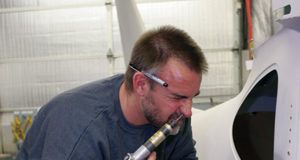
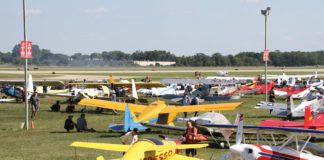
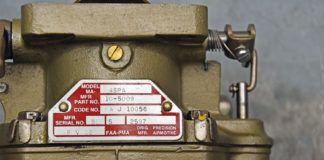

Great article! I earned my pilot’s license in 1993, but never have flown a tailwheeled acft. What a great read! Thank you!!!
Excelente publicación felicitaciones es maravillosamente instructiva!!!.